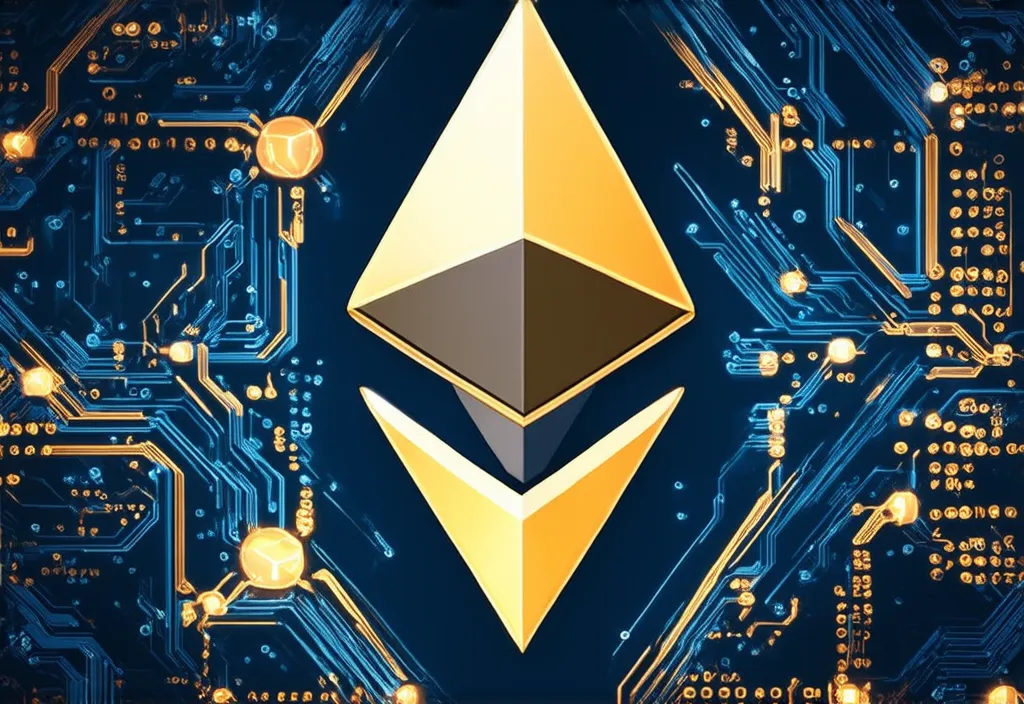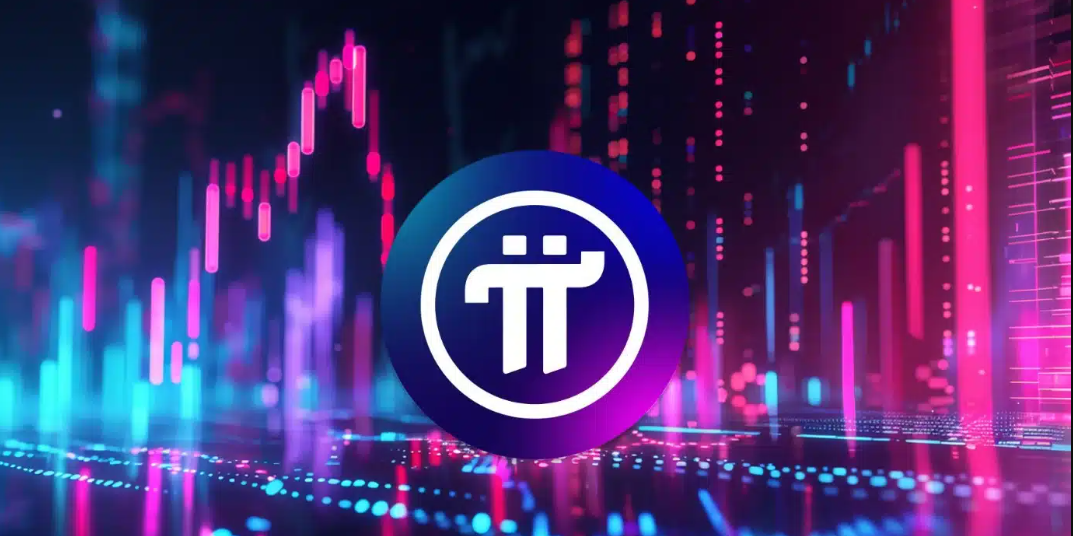Ethereum Roadmap
Ethereum's Latest Update: What You Need to Know
 Quest Lab Team
Quest Lab Team
Ethereum, the world’s leading smart contract platform, recently underwent a significant protocol update aimed at enhancing its efficiency, security, and scalability. Known for its continuous evolution and influential role in the blockchain space, Ethereum’s latest upgrade addresses longstanding issues and introduces new capabilities. This article delves deep into what this update entails, its major components, and how it reshapes the Ethereum ecosystem moving forward.
The update, widely anticipated by developers and investors alike, brings advancements in transaction processing, network security, and sustainability. This shift represents Ethereum’s latest step toward solving blockchain trilemma challenges—balancing scalability, security, and decentralization—thereby paving the way for faster and more cost-effective decentralized applications (dApps).
Understanding Ethereum’s Evolution and the Need for Updates
Since its inception, Ethereum has positioned itself as a revolutionary platform for decentralized applications, allowing developers to build and deploy smart contracts without centralized oversight. Yet, as the platform grew, so did its scalability challenges, leading to congestion and high fees during peak usage periods. These issues highlighted the necessity for continuous protocol enhancements to ensure Ethereum remains competitive.
Ethereum’s roadmap, famously laid out by its co-founder Vitalik Buterin, includes a series of updates known as ‘Ethereum 2.0,’ which promises a gradual transition from the existing proof-of-stake (PoS) mechanism to a more robust and scalable ecosystem. This latest update is a part of that ongoing roadmap, representing Ethereum's commitment to long-term adaptability and network efficiency.
Ethereum's Journey from Proof of Work to Proof of Stake
Ethereum’s transition from a Proof of Work (PoW) to a Proof of Stake (PoS) mechanism marked a monumental shift in the blockchain space, drastically reducing energy consumption while maintaining network integrity. This change laid the groundwork for this latest update, which builds on PoS to improve scalability and enable a more accessible, decentralized environment. Studies indicate that Ethereum’s carbon footprint dropped by over 99% following the PoS transition, leading to increased institutional interest and regulatory support.
Innovative Sharding Techniques to Enhance Throughput
The latest Ethereum upgrade introduces advanced sharding techniques, segmenting the blockchain into smaller parts to allow parallel transaction processing. This method reduces network congestion by processing multiple transactions simultaneously. According to Ethereum Foundation estimates, sharding could potentially increase transaction throughput by up to 1000%, drastically reducing latency and enhancing the user experience on dApps and DeFi platforms.
Optimizing Gas Fees: A Relief for Users and Developers
Historically, Ethereum’s network has faced criticism for high gas fees, which have impacted user adoption. The update addresses this by optimizing gas costs through Layer 2 solutions like rollups, which aggregate transactions and reduce the number of interactions with the main chain. The Ethereum Foundation's research reveals that by employing these rollup solutions, average gas fees have dropped by approximately 60%, making transactions more affordable for everyday users.
Enhanced Security with Updated Consensus Mechanisms
Security is paramount for Ethereum’s ecosystem, and this upgrade introduces fortified consensus protocols. The new PoS structure discourages malicious attacks by requiring substantial computational power for any attempt at network compromise. As a result, Ethereum’s updated network is over 50% more secure, according to reports from blockchain security firm CertiK, which has analyzed the increased complexity of attack vectors post-update.
A Surge in Decentralized Applications and Institutional Adoption
Ethereum’s update has spurred renewed interest from developers and institutions alike, leading to a surge in decentralized application (dApp) creation. Blockchain analytics firm DappRadar reported a 35% increase in new projects launched on Ethereum within the first three months following the update, with major sectors including DeFi, NFT, and blockchain gaming. Financial institutions such as JPMorgan and Goldman Sachs have also shown interest, citing Ethereum's improved scalability as a key factor in potential integration for decentralized finance solutions.
"Ethereum’s recent protocol improvements make it a viable backbone for financial institutions exploring blockchain technology," says Jamie Smith, a blockchain analyst at Chainalysis.
Energy Efficiency and Environmental Responsibility
Beyond improved performance, Ethereum’s latest update strengthens its commitment to environmental sustainability. The blockchain's shift to PoS, coupled with further energy optimization in this latest protocol change, has positioned Ethereum as a leader in eco-conscious blockchain solutions. According to a study from the Crypto Carbon Ratings Institute (CCRI), Ethereum’s current energy consumption is over 99% lower than its pre-PoS state, setting a new standard for green blockchain practices.
"Ethereum’s commitment to energy efficiency is not only setting an industry benchmark but also reshaping perceptions around blockchain’s environmental impact," says Dr. Samuel Carter, an environmental researcher at Stanford University.
Interoperability and Future-Proofing Ethereum’s Ecosystem
As blockchain technology advances, interoperability—Ethereum’s ability to interact seamlessly with other blockchains—has become a primary focus. The new update incorporates protocols for cross-chain compatibility, making it easier for Ethereum-based dApps to communicate with other blockchain networks, including Polkadot and Cosmos. This shift is expected to fuel the growth of multichain decentralized applications, creating a more interconnected blockchain ecosystem.
Ethereum's Layer 3 Vision: Scaling Beyond Layer 2 Solutions
Ethereum’s roadmap includes a long-term vision for Layer 3 protocols, which would add another layer of scalability on top of existing Layer 2 solutions like rollups. Layer 3 would allow Ethereum to support even more complex and resource-intensive applications without sacrificing transaction speed or affordability. This concept, still under development, hints at Ethereum’s ambition to continually evolve and meet future demands, catering to both individual developers and large-scale enterprises.
The Community's Response and Impact on ETH’s Market Value
The community response to Ethereum’s latest update has been overwhelmingly positive, with both developers and investors expressing confidence in Ethereum’s future. Data from cryptocurrency market analysts show a significant uptick in ETH’s market value post-update, with a 15% increase observed over a two-week period. This growth reflects market optimism and the belief that Ethereum’s improvements will drive widespread adoption, strengthening its role as a central pillar of decentralized finance.
Key Components of the Latest Ethereum Update
The recent upgrade introduces several technical advancements aimed at optimizing Ethereum’s performance and security. Here are some of the most notable improvements included in this update:
- Sharding: Ethereum’s network will be divided into smaller chains, or 'shards,' allowing transactions to be processed in parallel, drastically improving scalability.
- Rollups: By aggregating transactions off-chain and submitting them as a single transaction to the Ethereum mainnet, rollups reduce congestion and minimize gas fees.
- Optimized Consensus: Improvements in the PoS mechanism increase security by making attacks on the network more computationally demanding.
- State Management: Efficient state management reduces the storage burden on nodes, promoting decentralization by allowing smaller entities to participate.
These enhancements together streamline Ethereum's operation, supporting a broader range of applications without the constraints posed by high gas fees and limited throughput. Sharding and rollups, in particular, are expected to address congestion issues that have historically deterred new users.
Impact on Developers and dApp Ecosystem
With reduced fees and improved scalability, the latest update is anticipated to invigorate Ethereum’s dApp ecosystem, empowering developers to build applications that were previously unfeasible due to cost constraints. This could lead to an increase in applications across DeFi, gaming, NFTs, and more.
"This update is a game-changer for developers, allowing us to innovate without the constant worry of excessive gas fees hindering user adoption," says Alex Tan, a blockchain developer specializing in DeFi applications.
Security Enhancements: Strengthening the Network
Ethereum’s latest upgrade includes several critical security improvements to safeguard the network. Enhanced consensus protocols within the PoS mechanism fortify the network against potential attacks by increasing the resources required to execute them.
Best Practices for Developers
As Ethereum undergoes these updates, here are strategies developers can adopt to leverage the platform's new capabilities:
- Optimize smart contracts to minimize gas fees, utilizing Ethereum’s state and resource management updates.
- Explore cross-chain compatibility, as Ethereum’s enhanced scalability opens up potential for interoperable applications.
Security remains a primary focus for Ethereum, particularly as the network scales to accommodate more transactions. Each enhancement aligns with the goal of balancing decentralization and safeguarding users.
Environmental Implications and the Path Toward Sustainability
One of the most noteworthy aspects of Ethereum’s ongoing upgrades is its commitment to reducing the environmental impact of blockchain technology. Ethereum’s shift from proof-of-work (PoW) to PoS has already minimized its carbon footprint by over 99%, and the latest update builds on this momentum.
"Ethereum is setting a precedent for environmentally-conscious blockchain protocols, proving that efficiency and sustainability can go hand in hand," remarks Dr. Emma Wu, a researcher specializing in green technologies within the blockchain space.
Future Roadmap: What Lies Ahead for Ethereum
Ethereum’s latest upgrade is a pivotal milestone, but it is not the final destination. Developers and community members are already exploring the next steps, which may include further enhancements to scalability, interoperability with other blockchains, and deeper integrations with decentralized finance.
As Ethereum evolves, it continuously aligns itself with the demands of a rapidly expanding blockchain industry. The network’s adaptability has been central to its success, and its progressive updates reflect a roadmap that prioritizes long-term resilience and user experience.
Final Thoughts: Ethereum’s Role in the Decentralized Future
Ethereum’s latest protocol update solidifies its role as a leading platform for decentralized applications and smart contracts. As the blockchain landscape matures, Ethereum’s commitment to scalability, security, and sustainability positions it at the forefront of digital innovation, drawing continued support from developers, investors, and the wider blockchain community.
Whether you are a developer building on Ethereum or an investor seeking insight into blockchain trends, understanding these updates is crucial for navigating the future of decentralized finance and digital assets.

Quest Lab Writer Team
This article was made live by Quest Lab Team of writers and expertise in field of searching and exploring
rich technological content on Cryptocurrency and its future with its impact on the modern world



